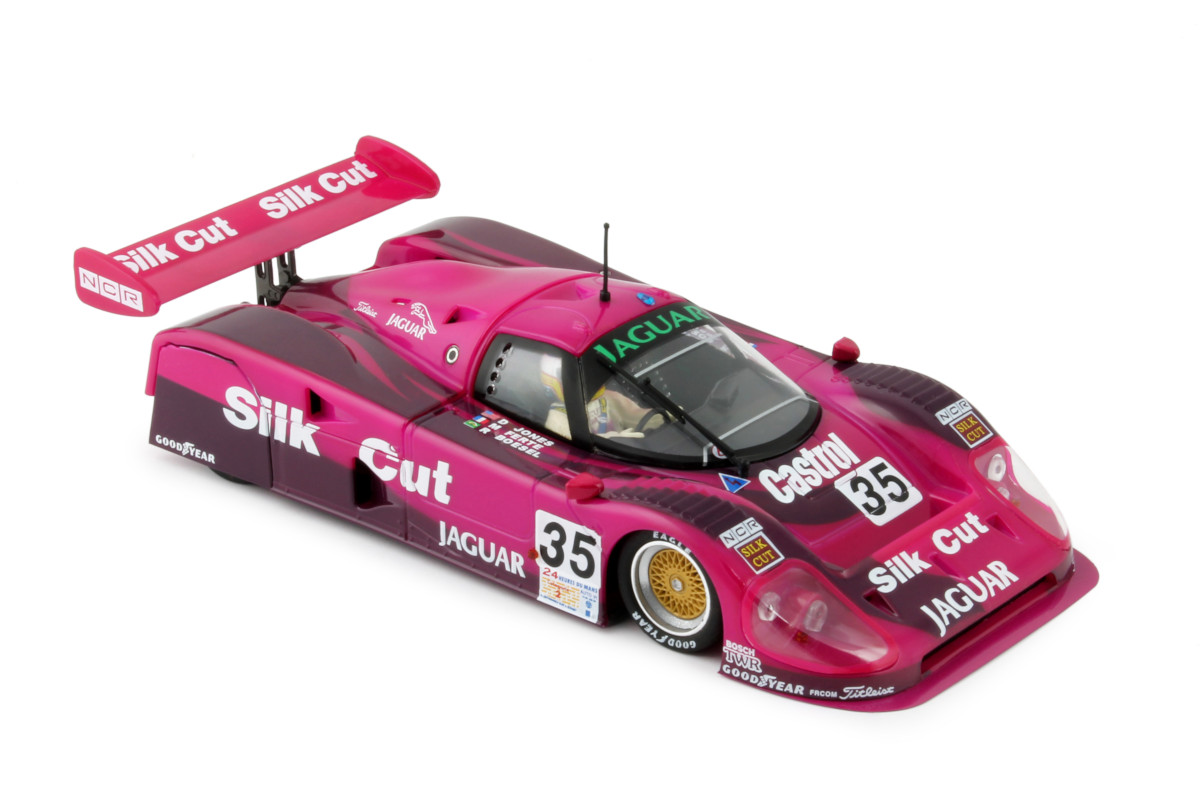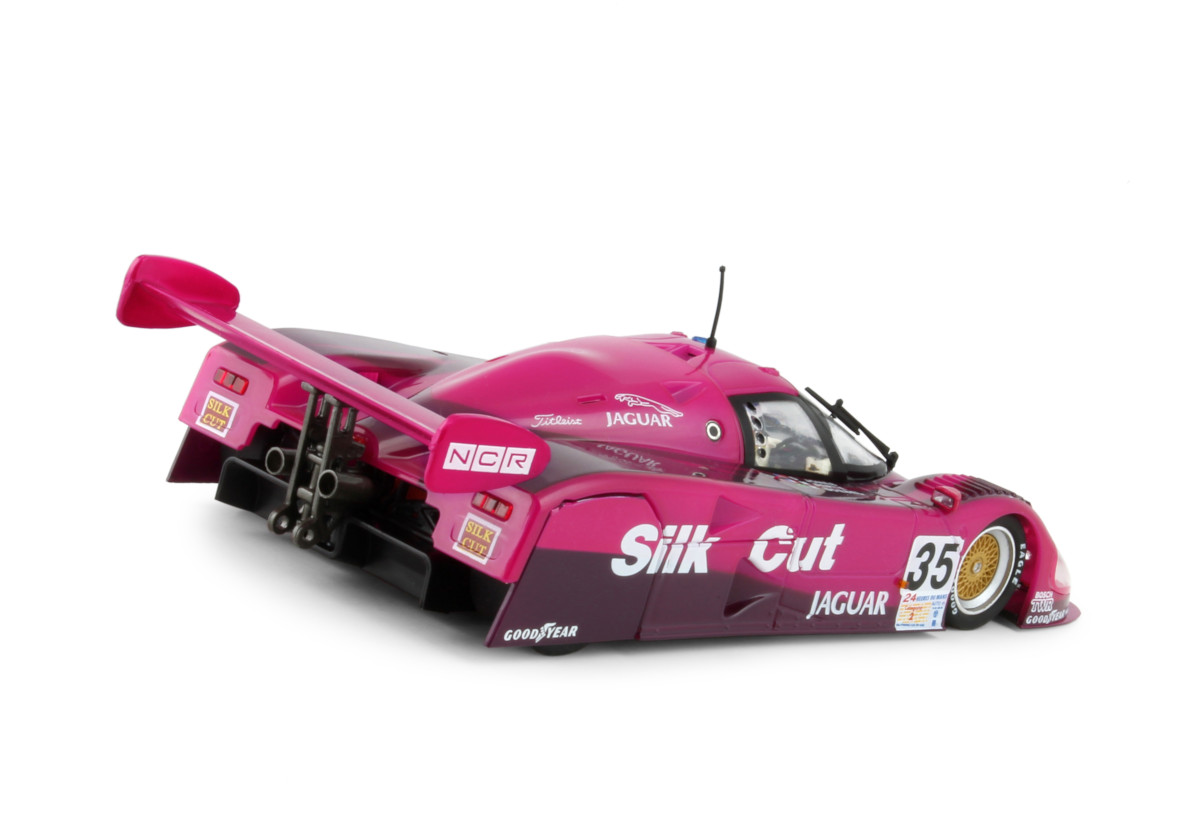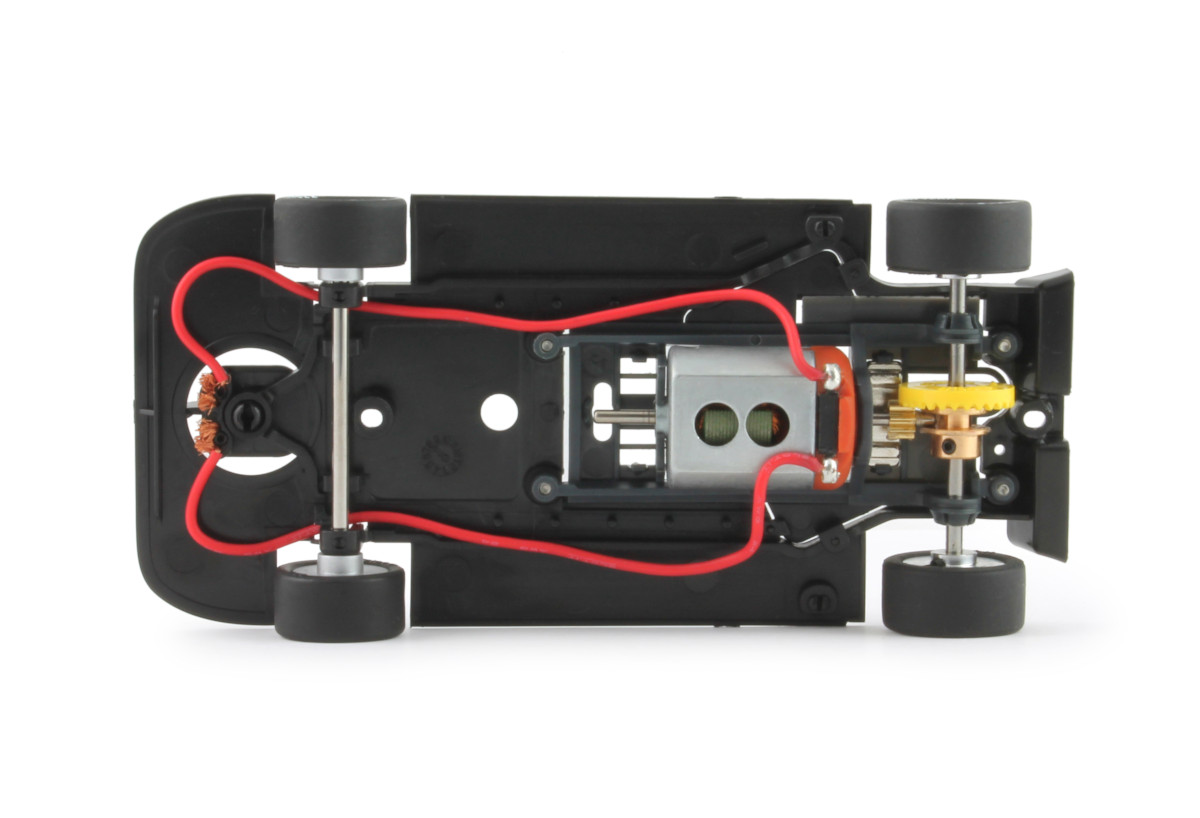Motor: FC130.
Easy, low-cost performance increase for Slot It GTP/Gp. C cars racing with magnets on plastic track...
Install SIPT06 19x10mm silicone slicks (a pair of these comes as extra tires with most of these cars) and an SICN07 racing magnet. The tires slip onto the rear wheels and the magnet snaps into the chassis in place of the original magnet. These two simple changes make a huge difference in the handling of the car and produce much faster lap times.
Need more grip? Try these aftermarket tires! Supertires 1400, 1401, 1402. 1403, 1404, 1405
The Jaguar XJR12 is a sport-prototype racing car, born in 1990 to replace the XJR9.
This full-size car featured a carbon fiber monocoque chassis. The engine was a V12 engine with two valves per cylinder. In 1990, displacement was 6 liters for the IMSA version and 7 liters in the Group C configuration; these values were increased in 1991, becoming 6.5 liters for the American version and 7.4 for the European one, whose weight was respectively 930 and 1000 kg.
The XJR12 was employed by Tom Walkinshaw Racing in particular for the long distance races, such as Daytona, Sebring and Le Mans, as this car was very reliable and regular in race trim.
The car was a superb racer: in 1990, it finished 1st and 2nd in the Daytona and Le Mans 24 Hours races, and in 3rd place at Sebring. Later on, it finished in 2nd, 3rd and 4th place at Le Mans in 1991, and in 2nd at Daytona in 1992.
Car #35, driven by Jones, Boesel, Feré finished 2nd at the 24h of Le Mans in 1991.


